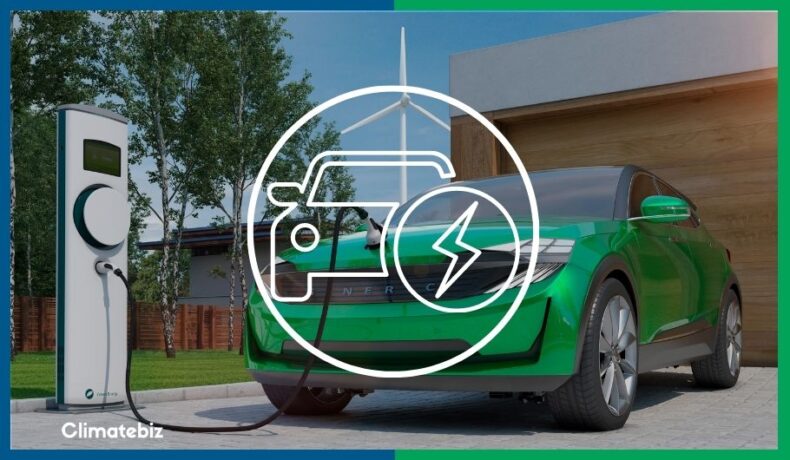Electric vehicles serve the same purpose as conventional internal combustion engine vehicles. However, if you were to open them up, you’d find that electric car parts are rather different.
EVs are very different from combustion engines as they don’t have many of the common parts you’d associate with a “normal” car.
For example, an EV doesn’t have an engine(yep, that’s right, you’ll probably get an extra trunk in the front too). As such, they don’t need gasoline, an air intake/exhaust system, spark plugs, engine oil, ignition coils, etc.
On top of this, EVs don’t even have gears (except for some examples such as the Porsche Taycan and Jeep Magneto), therefore they don’t require a complex transmission system.
You might then ask, “what goes into making an EV?“
Electric Vehicle Car Parts List
EVs require six key electric car parts to operate:
- Battery pack
- Power inverter
- Electric motor
- Onboard battery charger
- Battery management system
- Charging port
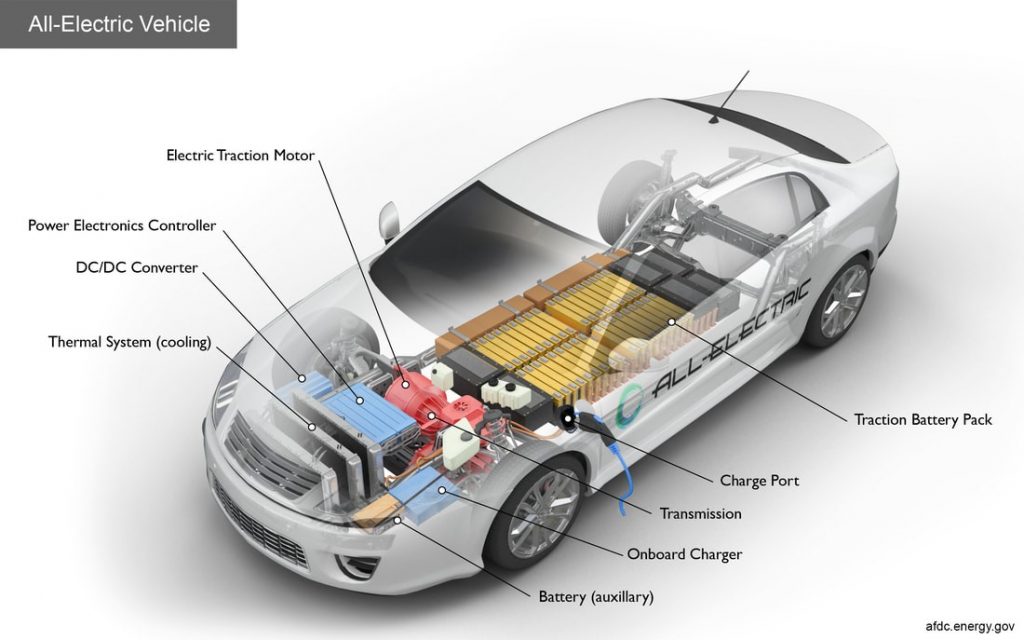
Additional components an EV has to help it operate are:
- Cooling/ heating system
- Electrically-powered accessories
Battery Pack
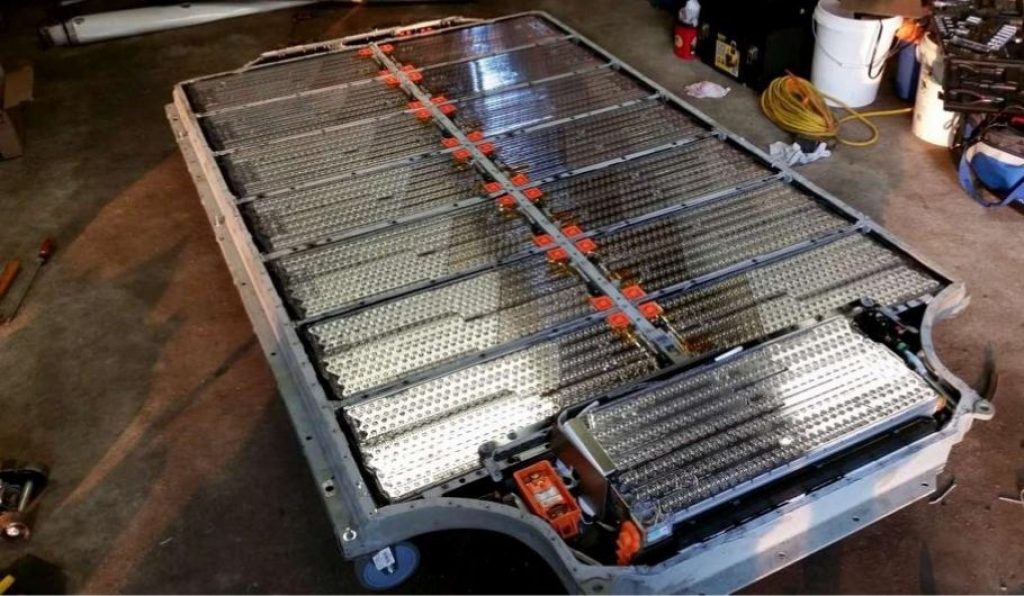
Where an internal combustion engine would have a gas tank full of fuel, the energy reservoir for an EV is the battery pack. The battery pack powers the driving, heating, cooling, lights, and other accessories of the car.
Battery packs typically use direct current (DC) electricity, so when charging at home (Level 2) the alternating current (AC) converts to DC.
You can find out more about battery packs here.
Electric Motor
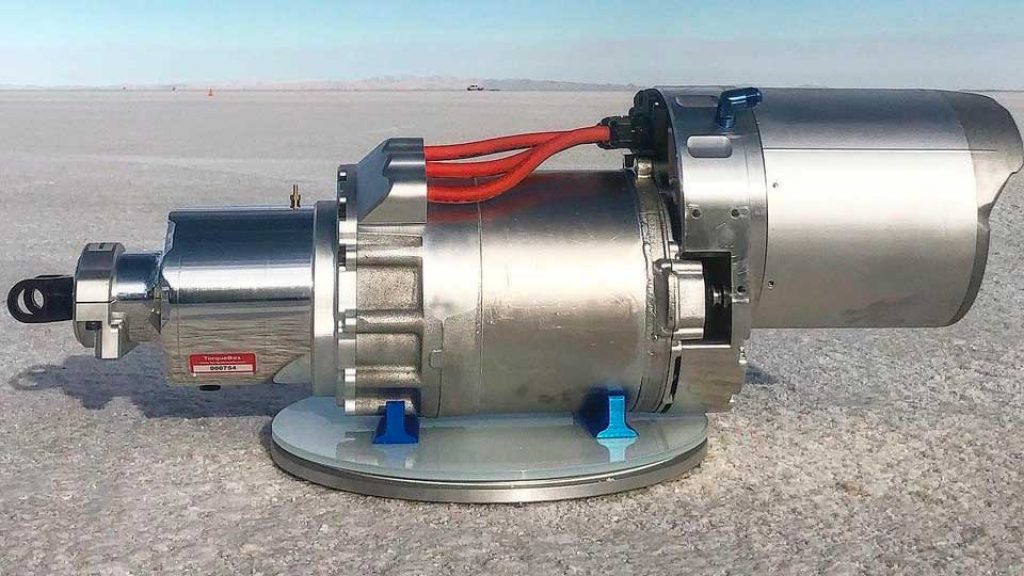
Source: motortrend
Just like internal combustion engines, there is not a one-size-fits-all. EV motors can be either DC or AC and have various sub-types.
DC Motors
The three types of DC motors are:
- Conventional “brushed” motor. This motor is able to produce high initial torque and easy speed control, but they will likely require a higher degree of maintenance.
- Brushless DC motors (BLDC). These are a more advanced version of conventional DC motors and don’t have the “brushes”. They’re much lower maintenance, more efficient and still offer the high initial torque.
- Permanent Magnet Synchronous Motor (PMSM). Similar to a BLDC, but with (you guessed it) magnets, the PMSM permanent magnets in the motor to create a constant magnetic field. You’ll find these motors in high-performance EV’s thanks to their high-power rating. The Tesla Model 3 is one such vehicle that uses this type of motor.

Source: gainesvilleindustrial.com
AC Motors
The two types of AC motors are:
- Asynchronous. Also known as an induction motor, the electric-powered stator (coil of wire housed inside the engine case) generates a rotating magnetic field. This motor is preferable for driving at higher speeds for a long time.
- Synchronous. The motor rotor acts as the rotating magnet in itself. These motors are best for urban driving, where lots of start and stopping takes place.
Both types of AC motors are able to take advantage of “regenerative braking”, as they’re able to work in reverse and convert mechanical energy into electrical energy.
You’ll find that the majority of EVs tend to use AC motors as they’re cheaper and more efficient (power-to-weight ratio), albeit they do offer lower torque.
Electric motors are generally around 95% efficient, whereas internal combustion engines are much lower at below 50% efficiency. EV motors are also smaller, lighter, and cheaper.
You’ll find a more in-depth guide on EV motors here.
Power Inverter
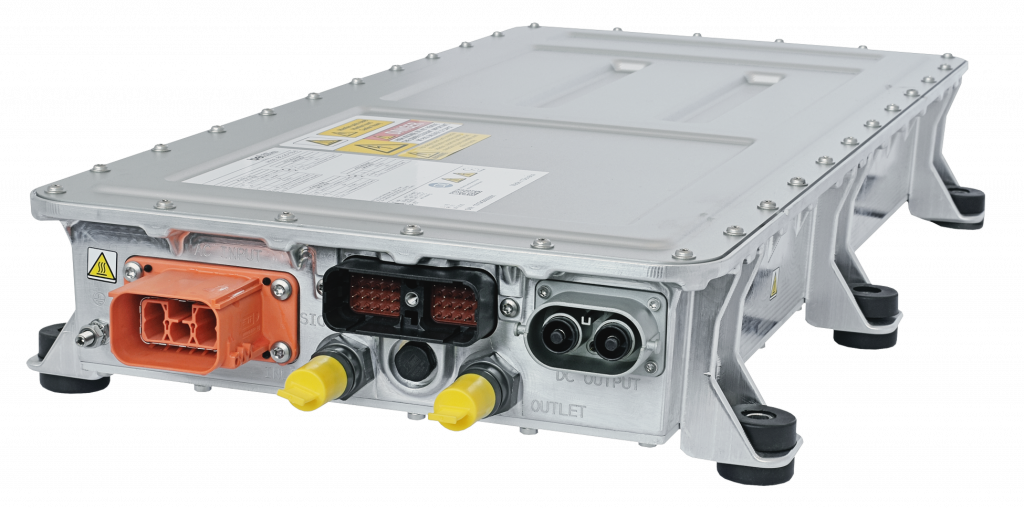
Source: powerelectronictips.
AC motors require a power inverter to convert the DC power stored in the battery. The power inverter can also work the other way around, converting AC power (from regenerative braking) into DC power for the battery.
Onboard Battery Charger

Source: BorgWarner
The majority of EVs have a battery charger built into them. These devices are used for standard AC charging (level 1 or 2), rather than DC fast charging. Their function is to limit the total amount of power entering the battery to avoid any electric damage.
Battery Management System
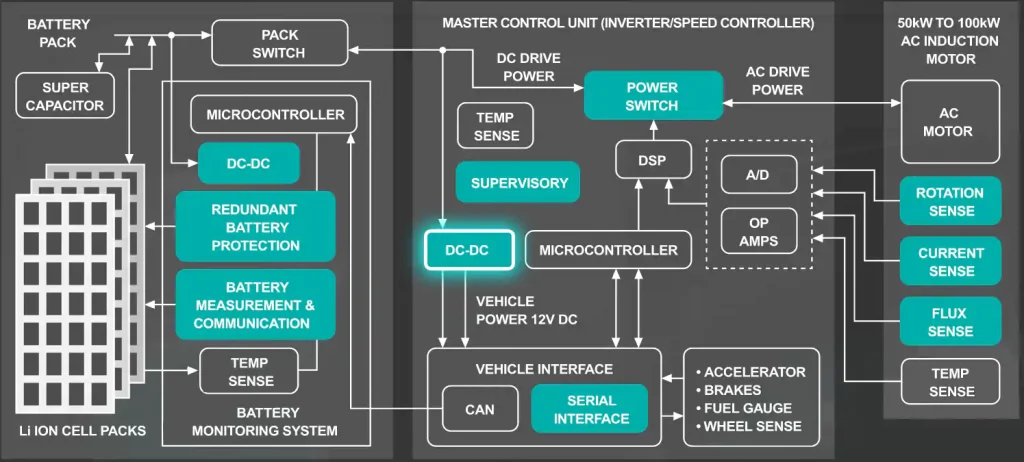
Source: Mouser
A battery management system (BMS) controls the current flow in and out of the battery to protect it and extend its service life.
Every EV has a BMS that is designed specifically for the car. This could limit potential future EV modifications, given that any changes would also need to be made accordingly within the BMS.
Charging Port

Source: Enel X
This port acts just like the access port for a conventional car, though instead of adding gasoline it enables access to the charge port. Both are entry points for the energy source into the vehicle.
To see the various types of charging port types from around the globe, check out this post.
Cooling/ Heating System

Source: Engineering.com
If added, the cooling/ heating system works as a thermal management unit with the purpose to extend the life of the battery pack. It’s required for reducing uneven temperature distributions.
It works via cooling the battery when fast charging and on hot days. It also warms the battery up on cold days and/or prepares it for fast charging.
The thermal management system works by combining forced air cooling, thermoelectric cooling, and liquid cooling. This system works with the battery management system to optimize battery life and operating conditions.
Electrically Powered Accessories

Source: SEAT
While conventional vehicles use accessory belts, EVs use their battery packs to power the air conditioning, power steering and other components. EVs also use a 12V direct current auxiliary lead battery to power the lights, radio and other components.
Final Thoughts
While providing the same function as cars with an internal combustion engine, battery electric vehicles function with significantly different internal mechanics, and so require some special electric car parts.
It’s important to keep in mind that these vehicles do not utilize the same technology that we are perhaps used to.
By doing away with many of the moving parts of conventional vehicles, EVs are able to also offer much more efficient performance – by getting rid of multi-part engines and drivetrains, for example.
It is important to also notice that EVs contain a battery (and normally a thermal) management system to enhance battery life.
Additionally, you may want to keep in mind the types of EV motors depending on your expected vehicle usage. Most EVs use AC motors, which are also able to take advantage of regenerative braking.

